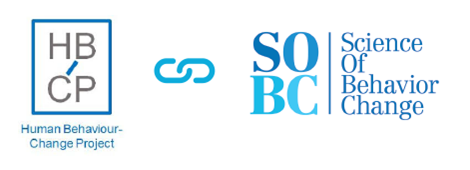Collaborative efforts are needed to increase the rigour, transparency, and reproducibility of research within the field of behaviour science. The Human Behaviour-Change project (HBCP), and Science of Behavior Change (SOBC) have developed resources to deepen our understanding of behaviour change interventions and to advance theory development.
Foundational work for the HBCP included the Theory and Techniques Project which developed an online tool to inform the development of theory-based interventions and to understand intervention effects theoretically. The tool identifies links between mechanisms of action of a behaviour change intervention and the techniques through which they can be activated. For example, it could help identify which techniques are likely to change beliefs about capabilities, such as ‘graded tasks.’ It could also identify which techniques to include in an evaluation to test particular theoretical mechanisms of change.
SOBC offers the Measures Repository, a collection of various measures of mechanisms of action, and documents their progress through the SOBC experimental medicine approach. Specifically, it shows whether researchers within the SOBC network have been able to influence this measure and whether change in the measure corresponds to behaviour change. If your hypothesis is that an intervention works by changing an individual’s belief about their capabilities, the repository is a resource in which researchers can search for the measures to validate this assumption.
The HBCP and SOBC collaborated to align these two resources, the Theory and Techniques Tool and the Measures Repository. It is not enough to have a theory and identify a mechanism – one must also measure that mechanism in a reliable and valid way. If a researcher has identified a mechanism of action and behaviour change technique of interest through the Tool, they can then access measures from the Repository that might be useful when considering study design. Similarly, a researcher interested in a specific measure on the Repository can see which mechanism(s) might correspond to this measure and which behaviour change techniques might effect mechanism change.
We hope this will lead to further collaborations with other groups to develop behaviour change interventions with identified component techniques and their potential mechanisms of action. It is part of a broader effort to link the application of theory to empirical research designs to promote a more rigorous understanding of how best to enable behaviour change.



